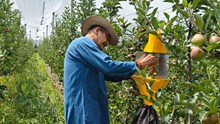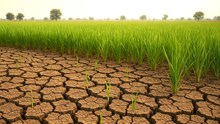
For Indian farmers who want to increase their income from aquaculture, seabass farming is a golden goose. Seabass stands out for its capability to endure and develop in nearly all forms of water whether it is fresh, brackish, or marine. It is a quick-growing, resistant fish with high demand locally as well as in overseas seafood exports. Regardless of whether you hail from a coastal region or a freshwater lake-adjacent state, seabass can be integrated into your agricultural system.
Know Your Fish: Asian Seabass
Seabass is a meat-eating fish that consumes small fish and shrimps. It possesses a flat body, powerful jaw, and pink eyes that shine at night. Sea Bass starts life as male and transforms into a female once it reaches adulthood typically after 4 kg of weight. This phenomenon is known as protandrous hermaphroditism.
The fish is fast-growing and attains market size (1 kg) within a period of 10-12 months, hence an ideal species for commercial production.
Starting Right: Seed Production and Hatchery Management
Seabass rearing starts with proper broodstock (parent stock) selection. Healthy sub-adult fish are harvested, quarantined to avoid disease, and thereafter reared in large tanks. After maturation, male and female fish are hormone-induced to induce spawning.
Eggs are harvested after roughly 36 hours of injection and are hatched in special tanks. Larvae are initially provided with small living organisms such as rotifers and then Artemia (brine shrimp). The fry reaches a size of approximately 1.5 cm after 30 days.
Nursery Rearing: Assisting the Fry to Become Strong
Small fry (Fish babies) are fragile and are given extra care. They are kept in tanks, hapas (net cages), or cages with proper aeration and water exchange for the next 40 days. Feed is provided 3-4 times a day during this period. The quantity of feed is progressively increased as the fish grow.
Grading or sizing fish is necessary every 7 to 10 days to avoid larger fish eating the smaller fish, a universal malady known as cannibalism in seabass.
At the end of nursery rearing, the fish have a size of 7 cm and are ready to be transferred to grow-out systems such as cages or ponds.
Grow-Out Culture: Cage and Pond Farming
Cage Farming:
Cage culture is very efficient, particularly in estuaries, reservoirs, and coastal waters. Fingerlings are stocked in floating cages after acclimatization at 20 fish per cubic meter. When the fish develop further, cage nets with bigger meshes are employed. The fish are given dry pellet feed according to their weight and age. Grades and thinning are properly maintained to obtain uniform growth and to prevent cannibalism.
Pond Farming:
In case you cannot have access to open water, sea bass can be cultured in freshwater or brackish water ponds. A pond of at least 0.2 hectares capacity with 1–2 meters depth is ideal. The pond is netted and fenced prior to stocking to avoid predators and fish escape. Fingerlings are initially reared in nursery hapas within the pond until they are 50g in weight. Then, they are stocked in the pond at a density of 1 fish/m².
Feeding and Water Quality
The Key to Rapid Growth Feeding is provided 2-3 times daily with formulated pellet feed, beginning with a small size and gradually increasing with the size of the fish. The amount of feed is determined by the body weight and age of the fish.
Water quality is also very important. The temperature must remain between 27°C and 30°C, salinity from 0 to 35 ppt, and dissolved oxygen (DO) greater than 4 ppm. Apply lime (250 kg/ha) and fertilizers such as cow dung or urea in the event of low natural plankton. Paddlewheel aerators maintain oxygen, particularly during hot periods.
Water replacement is required: 10% per week during the initial 3 months and then it is raised to 30% as fish become larger in size.
Harvest and Marketing
Sea Bass is caught at 10-12 months when it is of approximately 1 kg or heavier. Seine nets or lift nets are employed for harvesting from ponds or cages. Fish will get a good market price if they are cleaned and cooled right after harvest.
Seabass is fetching a good price in the domestic and foreign markets. With 80-85% survival rate in cage culture and projected yield of 16 kg/m³, the revenue potential is huge.
Sea Bass is not just a fish, it’s a livelihood opportunity waiting to be tapped. Whether you’re a traditional farmer, a first-time aquapreneur, or someone looking to diversify income, seabass farming offers great returns with the right guidance and care. With proper seed, clean water, good feed, and timely management, farmers across India can transform simple water bodies into profitable fish farms.
As more and more farmers take up seabass farming, it may easily become the next big wave in India's blue revolution.
















